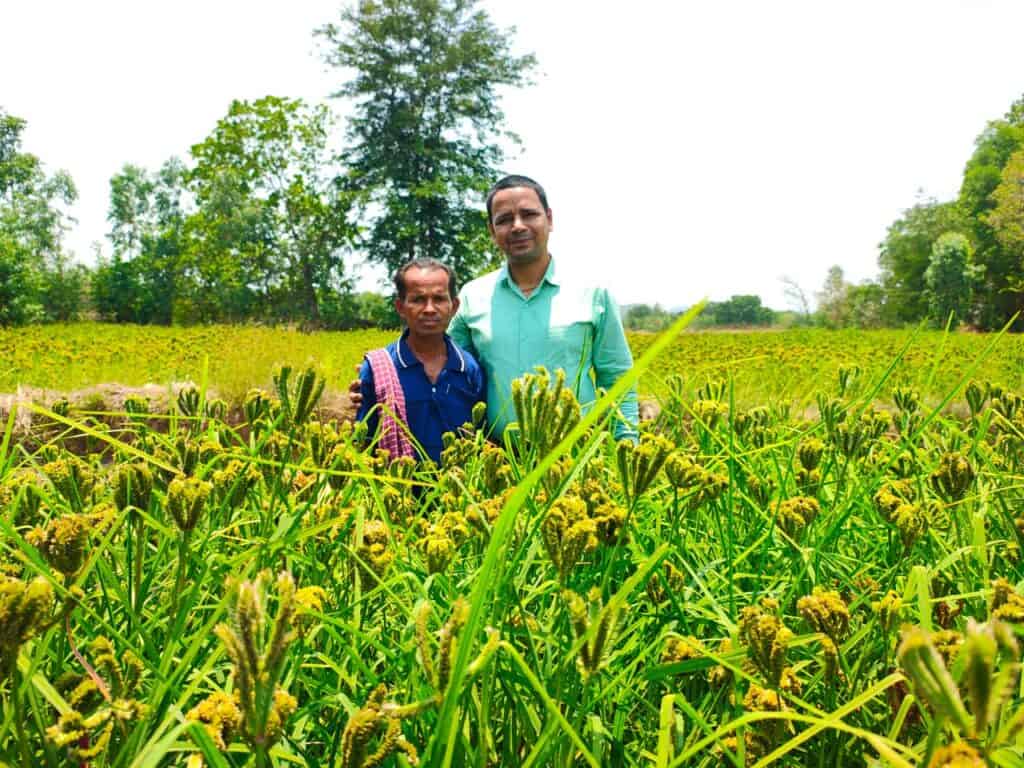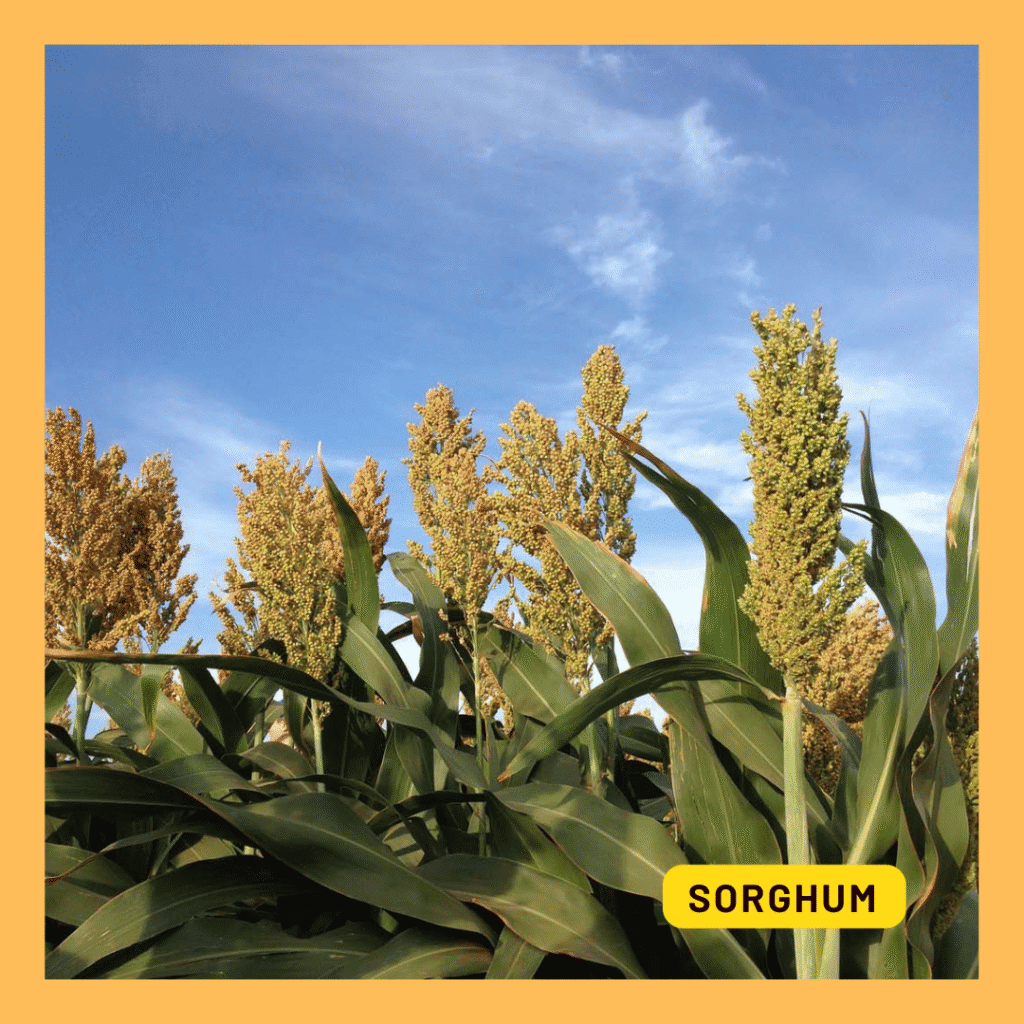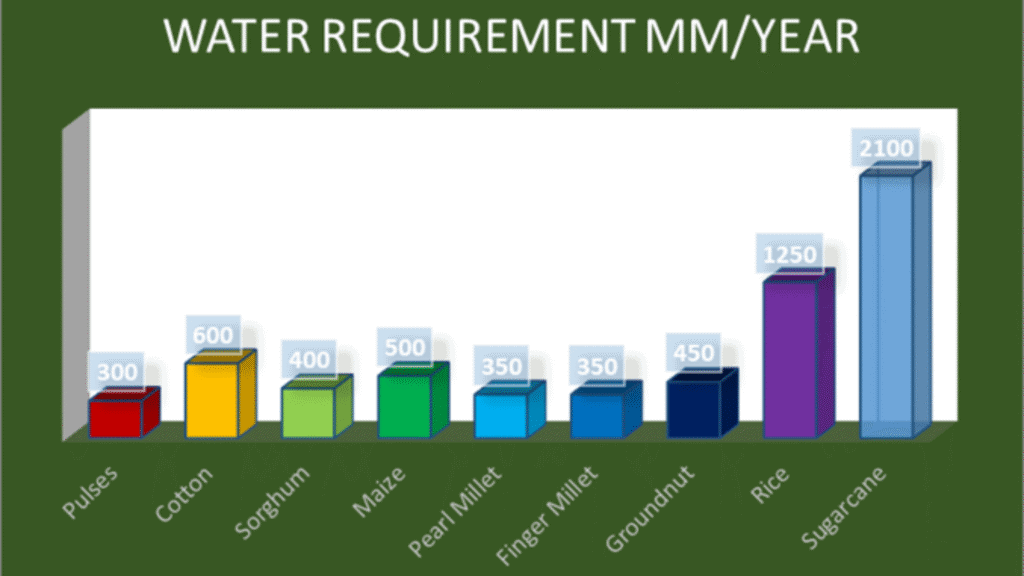Table of Contents
Environmental Sustainability of Millets:
The urgent problem of ecological degradation in the modern era calls for a coordinated push toward sustainability. Finding sustainable food options is crucial as we deal with the effects of climate change and depleting resources. Here we will explore millets, the miracle ancient crops. These ancient grains not only provide a host of health advantages, but they are also essential for promoting environmental sustainability.
Millets play an important role in the restoration of the ecosystem.
Ecosystem Restoration means helping in the recovery of ecosystems that have been degraded or destroyed due to over-exploitation of nature. We can also say, to improve the productivity and capacity of the ecosystem to meet the livelihood.
The UN Decade on Restoration will work on 8 Ecosystems, and the Farmland Ecosystem is one of them that has degraded due to overuse of land, soil erosion, and excessive use of fertilizers and pesticides.
How Millets Help in the Restoration of the Ecosystem:
Millets are putting less pressure on nature as compared to other crops like rice, wheat, and sugarcane. In India, most millet crops are grown organically and are less dependent on chemical fertilizers and pesticides. As you know, excessive use of fertilizers is not only contaminating water and land but also responsible for climate change. They are drought-tolerant and can be grown with less rainfall of 350-400 mm. This crop grows faster and matures within 60-65 days.
The Mixed Cropping System is followed in millets. It is grown with pulses, which helps in nitrogen fixation and improves the fertility of the soil. The fibrous root system of millets helps check soil erosion as the roots are extremely branched. We can say that Millets are good soil preservers.
The important issue that millets are going to address is climate change. We can say they are Future Crops. In recent years, the effects of climate change have been felt across the globe. The increase in temperature and shortage of water in each passing year have impacted the farmers.
Millets are the crops grown in dryland areas by small and marginal farmers, and it has the least impact on the environment. The farmers are producing grains for their consumption and sustaining their livelihood. Restoring ecosystems, large and small, protects and improves the livelihood of the people who depend on them.
Millets support the fodder security of the cattle and thus contribute to the animal health of a community.
Role of Miracle Millets – Reducing Pollution:
In the coming days, Sweet Sorghum will be used in the production of biofuels. Biofuels will have less impact on the environment as exhaust gases will be much cleaner, and there will be a reduction in greenhouse gas emissions. Most ethanol is produced from sugar cane molasses. But when we compare Sweet Sorghum with Sugar cane, Sweet Sorghum is much ahead in terms of duration, and also the requirement of inputs and water.
As per a research study by the Indian Institute of Millet Research, Hyderabad, Sweet Sorghum has ethanol recovery of 6-9% of juice, and ethanol yields about 1400-2000 litres/ha/season, and power from the residue(bagasse) is 2.5 to 3.5 MW/ha.
Ethanol blending with fossil fuels will help in reducing pollution and thus keep the environment clean.
Role of Millets in Addressing Climate Change and Nutritional Security:
In the future, Millet Cultivation is the last hope to produce food without destroying the environment. The land under millet cultivation is deteriorating. Let us promote millets together and bring a change in the farming community.

In a world where the population is hurtling toward the 10 billion mark by 2050, we find ourselves grappling with two formidable adversaries: climate change and the looming specter of food and nutritional insecurity. These two challenges are undeniably entwined, as the relentless march of climate change disrupts traditional crop production, while agriculture itself stands as a significant contributor to the ominous greenhouse gas, accounting for a substantial 19.6% of the global total.
It’s high time we reevaluate our agricultural practices and zero in on crops that can address climate change while leaving a smaller carbon footprint. Step forward to the unsung heroes of the agricultural world – millets. These seemingly unassuming grains, once relegated to the fringes of our diets, hold the key to addressing both climate change and nutritional security.
Picture a crop that not only excels in nutrition but also thrives in the harshest environmental conditions. Millets fit this bill perfectly. They’re the all-stars of the plant kingdom, requiring little to no fertilizers, minimal pesticides, and scant irrigation. In comparison to many other crops, millets have a far lighter ecological footprint, making them an attractive choice in our battle to combat climate change.
But it doesn’t end there; millets are champions of the environment in more ways than one. These resilient miracle ancient grains, with their hearty disposition, work tirelessly to shrink our greenhouse gas emissions. They’re like nature’s own carbon warriors, converting more carbon dioxide into life-sustaining oxygen. So, when you consume millets, you’re not just eating healthily, you’re actively participating in the fight against climate change.
And let’s talk about water – the lifeblood of agriculture. Millets are the wise, thrifty gardeners of the crop world, demanding far less water than their illustrious counterparts, rice and wheat. This makes them not just environmentally responsible but also water-wise choices for our planet’s future.

Pearl Millet, Finger Millet, and Sorghum have a water requirement of 350-400 mm/year, placing them in the middle of the range of water requirements among the listed crops. This makes them more water-efficient compared to many other staple crops like rice and sugarcane.

From this data, it’s clear that millets offer a water-efficient alternative to crops like rice and sugarcane, which have much higher water requirements. Growing millets, especially in regions with water scarcity, can contribute to better water management and sustainability in agriculture while addressing the challenge of food and nutritional security.
In a world where the stakes are higher than ever, millets emerge as the unsung heroes, our allies in the war against climate change and nutritional insecurity. They’re not just crops; they’re symbols of resilience and sustainability, and it’s time we give them the recognition they truly deserve. So, next time you sit down for a meal, consider embracing the might of millets – it’s a delicious, nutritious, and planet-friendly choice that might just save the day.
By encouraging millet farming and consumption, we are not just preserving biodiversity and reducing carbon footprints — we are saving our planet, one small grain at a time.
The time to act is now.
Millets can indeed save our planet — if we let them.
Author: Tapas Chandra Roy, A Certified Farm Advisor on Millets, ‘Promoting Millets from Farm to Plate’, and an Author of the book -” Millet Business Ideas-Empowering Millet Startups”. In a mission to take the forgotten grains- Millets to Millions. To remain updated on my blogs on Millets, please subscribe to my newsletter, and for any queries, please feel free to write to tapas@milletadvisor.com

